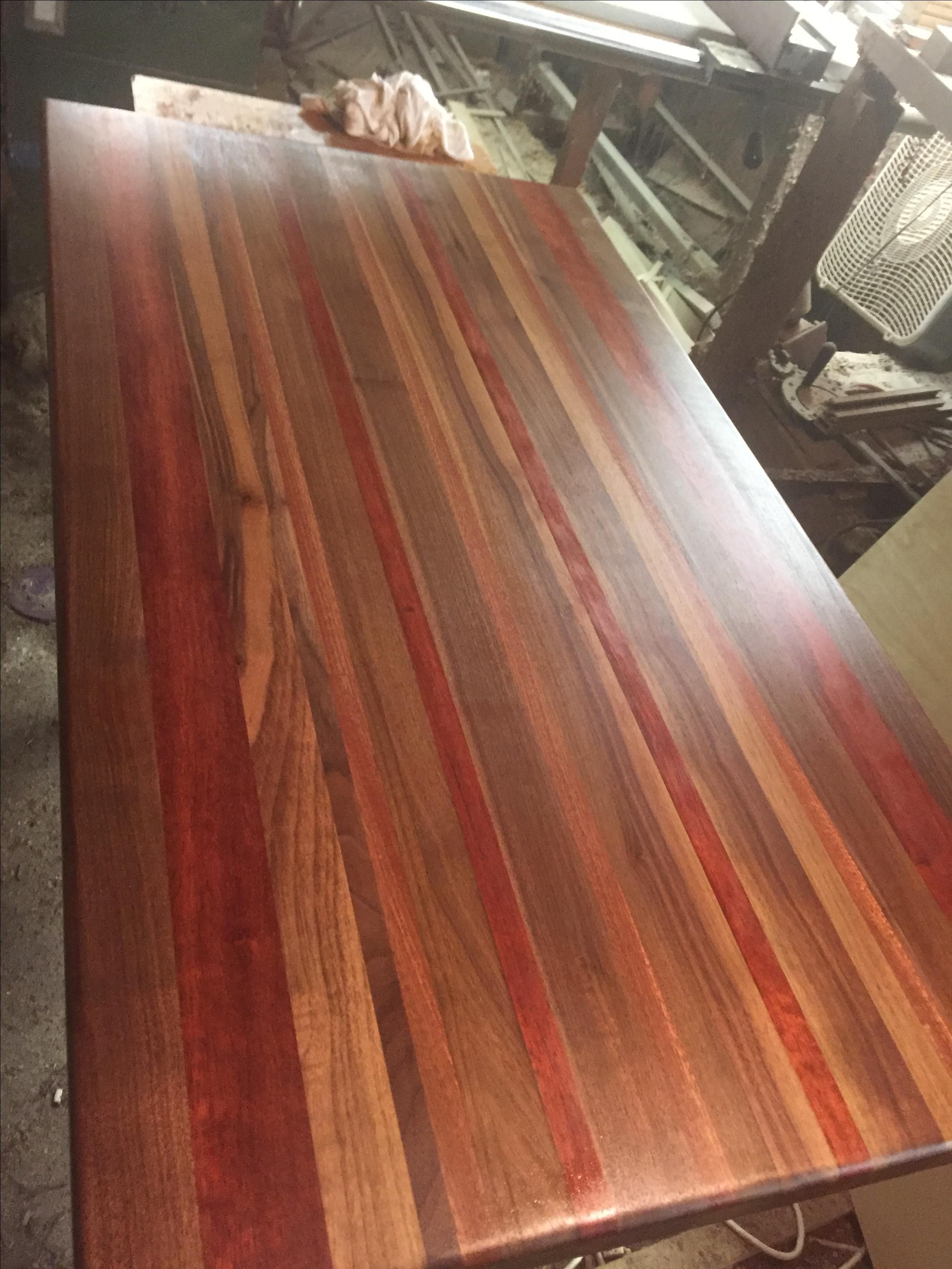Cutting butcher block countertops is an essential step in customizing and installing them in your kitchen or workspace. Butcher block countertops, known for their durability and natural beauty, are often made from hardwoods like maple, oak, or cherry. Cutting them requires careful planning and precision to ensure a clean and accurate cut. In this article, we’ll delve into the various aspects of cutting butcher block countertops, including tools needed, techniques, safety precautions, and maintenance tips.
When preparing to cut a butcher block countertop, gather the necessary tools and materials. You’ll need a tape measure, straight edge or ruler, pencil, masking tape, circular saw or jigsaw with a fine-toothed blade, clamps, and safety gear such as goggles and gloves. Additionally, ensure a stable work surface and adequate lighting for clear visibility.
Before making any cuts, measure and mark the desired dimensions on the countertop using a pencil and straight edge. Double-check your measurements to avoid costly mistakes. To prevent splintering and ensure a clean cut, apply masking tape along the cut line. This technique helps stabilize the wood fibers during cutting.
When cutting the butcher block countertop, use a circular saw or jigsaw with a fine-toothed blade suitable for cutting wood. Ensure the blade is sharp to minimize splintering and achieve smooth edges. Secure the countertop to a stable work surface using clamps to prevent movement during cutting.

When using a circular saw, adjust the blade depth to slightly exceed the thickness of the countertop. Make slow, steady cuts along the marked line, maintaining control of the saw throughout the process. For curved cuts or intricate designs, a jigsaw offers greater flexibility and precision.
Safety is paramount when cutting butcher block countertops. Wear goggles to protect your eyes from sawdust and debris, and gloves to safeguard your hands from sharp edges. Follow manufacturer instructions for operating power tools, and never leave them unattended while in use.

After cutting the butcher block countertop, inspect the edges for any rough spots or splinters. Sand the edges with fine-grit sandpaper to smooth them out and achieve a professional finish. Wipe away any sawdust or debris before proceeding with installation.
To maintain the beauty and integrity of your butcher block countertop, apply a food-safe finish or sealer according to manufacturer recommendations. This helps protect the wood from moisture, stains, and scratches, prolonging its lifespan and enhancing its appearance.
Regular maintenance is key to preserving the quality of your butcher block countertop. Clean spills promptly with mild soap and water, avoiding harsh chemicals that can damage the wood. Periodically sand and refinish the surface to remove scratches and maintain its natural luster.
Can I cut butcher block countertops with a regular saw?
Yes, you can use a circular saw or jigsaw with a fine-toothed blade suitable for cutting wood. Ensure the blade is sharp and appropriate for the task to achieve clean cuts without splintering.
How do I prevent splintering when cutting butcher block countertops?
Applying masking tape along the cut line helps stabilize the wood fibers and prevent splintering. Additionally, ensure your saw blade is sharp and adjust the cutting depth to slightly exceed the thickness of the countertop.
What safety precautions should I take when cutting butcher block countertops?
Wear goggles to protect your eyes from sawdust and debris, and gloves to safeguard your hands from sharp edges. Follow manufacturer instructions for operating power tools, and never leave them unattended while in use.
How do I maintain and prolong the lifespan of my butcher block countertop?
Regular maintenance is key to preserving the quality of your butcher block countertop. Clean spills promptly with mild soap and water, avoid harsh chemicals, and periodically sand and refinish the surface to remove scratches and maintain its natural luster.
Can I install a butcher block countertop myself?
Yes, with the proper tools, materials, and techniques, you can install a butcher block countertop yourself. However, if you’re unsure or uncomfortable with the process, it’s recommended to seek professional assistance for accurate and efficient installation.

My Take on Butcher Block Countertops”Woodnu0027t” You Like to Know

Butcher Block Maintenance: From cutting boards to countertops

DIY // How to Cut, Sand, Install, and Finish a Butcher Block

Do-It-Yourself Butcher-Block Kitchen Countertop HGTV

How to Clean And Maintain Your J. Aaron Wood Countertops So They

How To Cut Out Sink In Butcher Block or Laminate Countertops

Related articles:
- Butcher Block Countertop For Kitchen Island
- Can You Paint Butcher Block Countertops
- Butcher Block Countertops With White Cabinets
- Pine Butcher Block Countertops
- Butcher Block Countertops Walnut
- Maple Butcher Block Countertops
- Care Of Butcher Block Countertop
- Butcher Block Countertops Maintenance
- Antique Butcher Block Countertops
- Butcher Block Countertop Sealing
